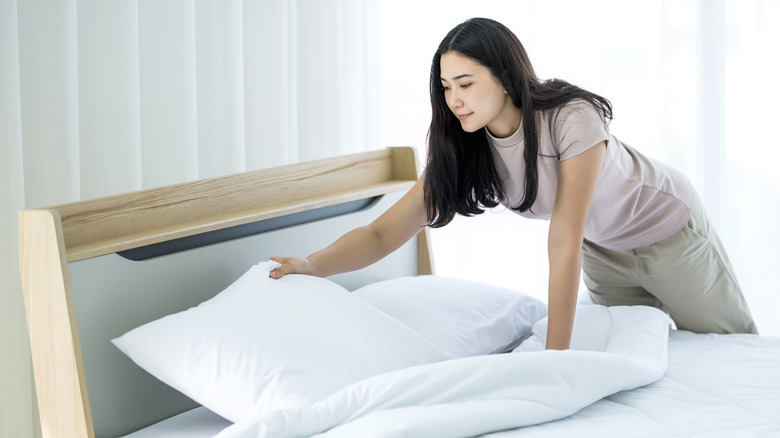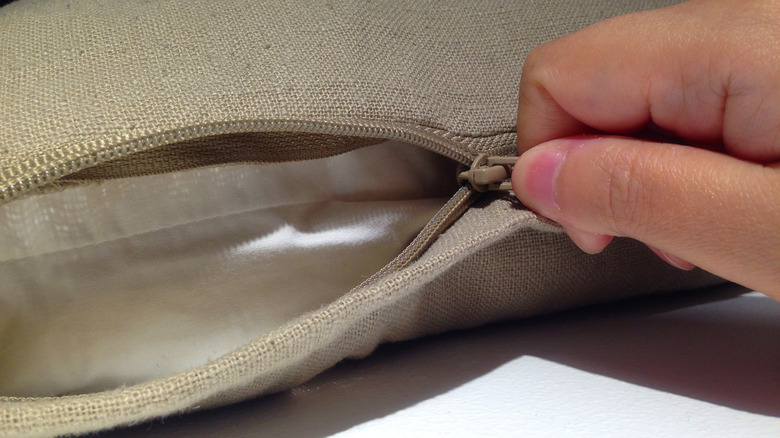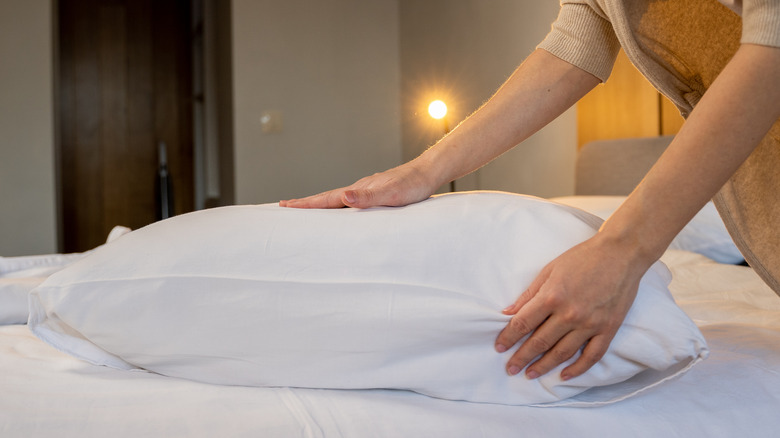How To Pick The Best Protector To Keep Your Pillows Clean For Longer
We may receive a commission on purchases made from links.
It's often said that up to one-third of a pillow's weight is made of dead bugs, dust mites, and dead skin; not to mention germs, saliva, sweat, body oil, and everything else that accumulates from being slept and drooled on every night. In other words, pillows are filthy. In addition to regularly washing your pillow, a pillow protector can help keep your pillows clean for longer. The best protectors have small pores and are certified to keep your pillows safe and clean.
A pillow protector is different from a pillowcase. Think of a mattress protector compared to a fitted sheet — the protector is more robust and has a tighter seal, which prevents moisture, debris, or bugs from penetrating it. Aside from the filth factor, dirty pillows can contribute to allergies, asthma, and skin issues, as well as spreading illnesses, making a pillow protector a healthier choice overall. There are other benefits to using a pillow protector as well including extending the life of the pillow by protecting it from stains and moisture. But not all pillow protectors provide the same level of protection. Here's what to look for.
What to look for in a pillow protector
One key way that pillow protectors are different from pillowcases is they have much smaller pores, which are too tiny for dead cells to pass through. The less debris that gets into the pillow, the fewer mites and germs are attracted to it as a breeding ground. Look for a pillow protector with a pore size of six micrometers or smaller. Otherwise, it won't be as effective for this purpose.
Pillow protectors may be made from several different materials, including cotton, polyester, silk, bamboo, and others. Cotton is softer, while polyester is more wrinkle-proof. Other than that, each material can be equally effective at protection, so it's up to your personal preference. Check whether the protector is waterproof, if that's a feature you need.
Closure type is also a factor to consider. High-quality pillow protectors tend to be made with zipper closures, which provide more security. But some are made with a simple flap, similar to a pillowcase, which is easier to put on. You can also look at whether the protector is machine washable and if it offers extra features, like cooling power.
Where to shop for pillow protectors, and more care tips
Rather than pouring over pillow protector specs, you can simply look for one that is certified by the Asthma and Allergy Foundation of America (AAFA). AAFA-certified protectors are tested for effectiveness and have been found to block more than 99% of dust mite allergens after the first wash. The barrier must then remain 95% effective even after 18 washes. Pillows with the AAFA certification will typically say "certified asthma and allergy friendly," or have the AAFA logo on the product package. A few examples of AAFA-certified pillow protectors are the microfiber Beautyrest Twin Pack Pillow Protector, the Bloomingdale's My Luxe Pillow Protector made of cotton, and the silk-lined SmartSilk Pillow Protector.
Buying a high-quality pillow protector is only the first step. You'll need to wash your pillow protector once a month, as well as striping and deeping clean your pillows twice a year. Check the care instructions for how to wash the protector and pillow, as some should not be put in the dryer. The general rule for how often to replace your pillows is every two years, but with a protector, yours may stay in good condition for longer.


